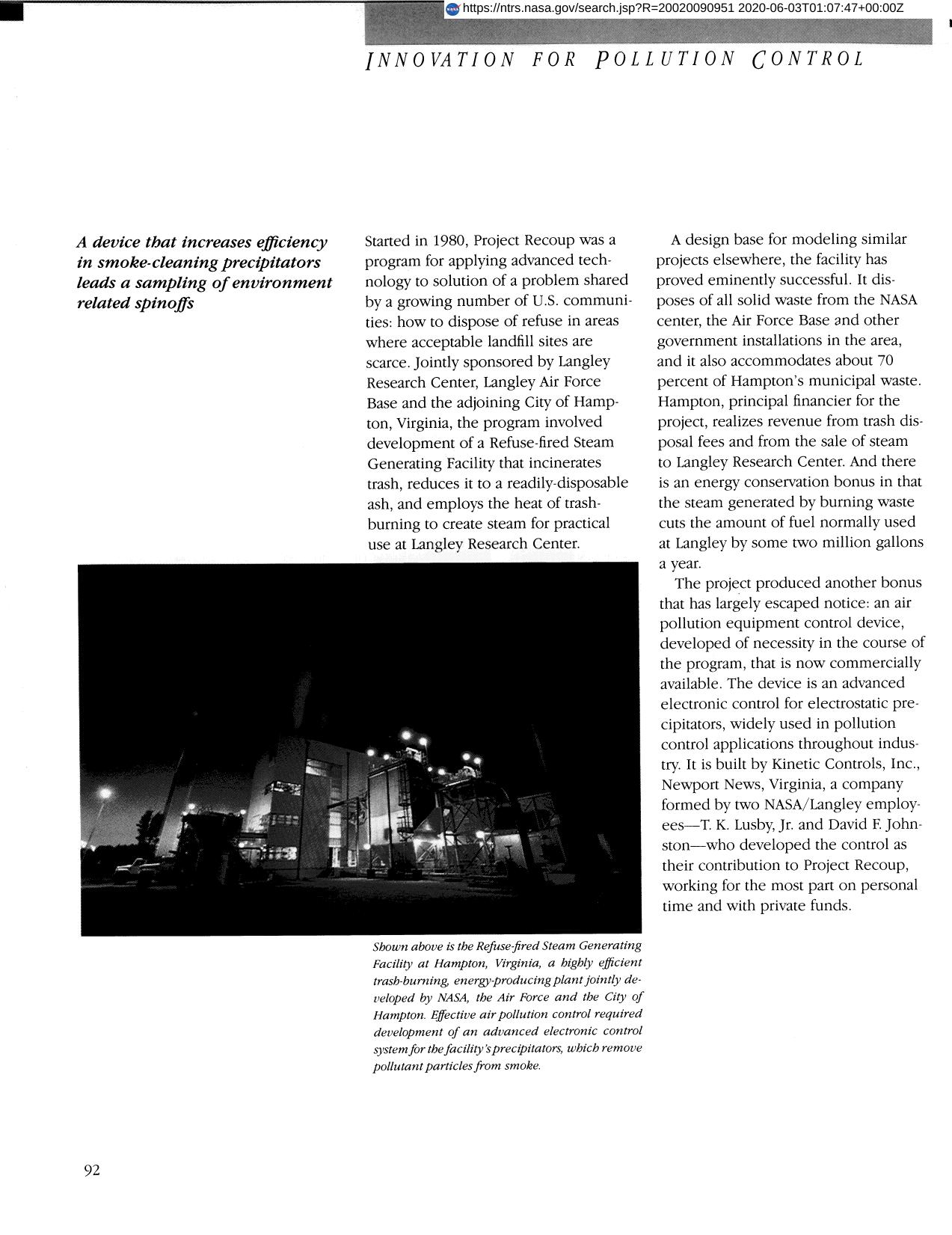
Innovation for Pollution Control
Originally published in 1986
Body
Kinetic Controls Inc.'s refuse-fired steam generating facility led to the development of an air pollution equipment control device. The device is currently marketed by two NASA/Langley Research Center employees. It automatically senses and compensates for the changes in smoke composition when refuse is used as a fuel by adjusting the precipitator's voltage and current to permit maximum collection of electrically charged dust particles. The control adapts to any electrostatic precipitator and should have extensive commercial applications.
Full article: http://hdl.handle.net/hdl:2060/20020090951
Abstract
Kinetic Controls Inc.'s refuse-fired steam generating facility led to the development of an air pollution equipment control device. The device is currently marketed by two NASA/Langley Research Center employees. It automatically senses and compensates for the changes in smoke composition when refuse is used as a fuel by adjusting the precipitator's voltage and current to permit maximum collection of electrically charged dust particles. The control adapts to any electrostatic precipitator and should have extensive commercial applications.

Innovation for Pollution Control

Innovation for Pollution Control













